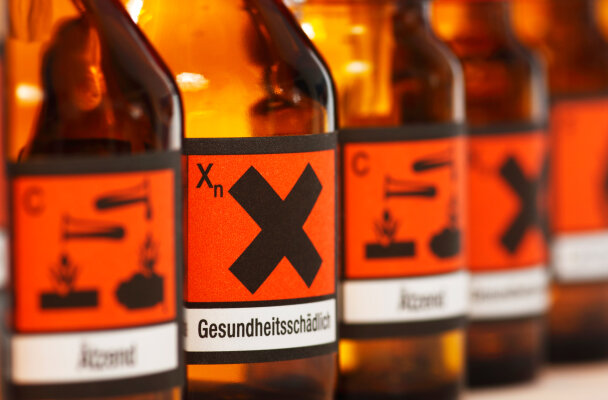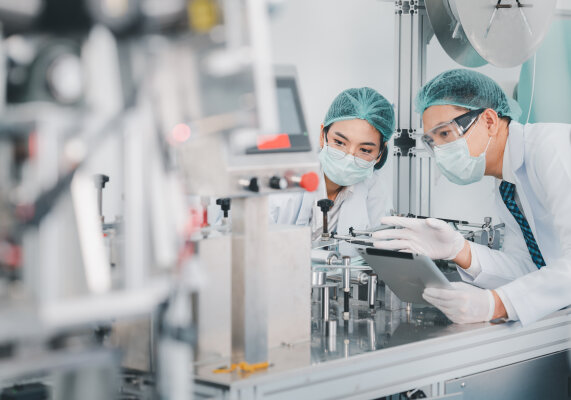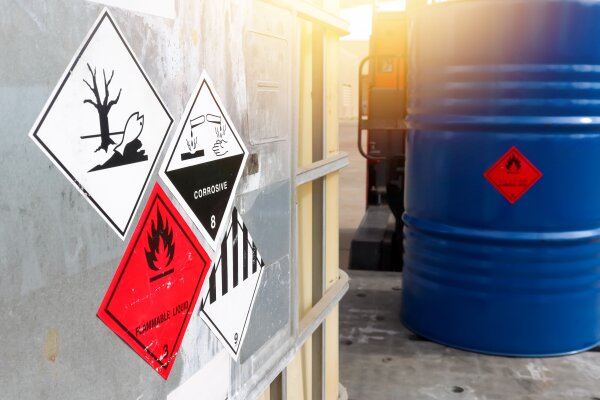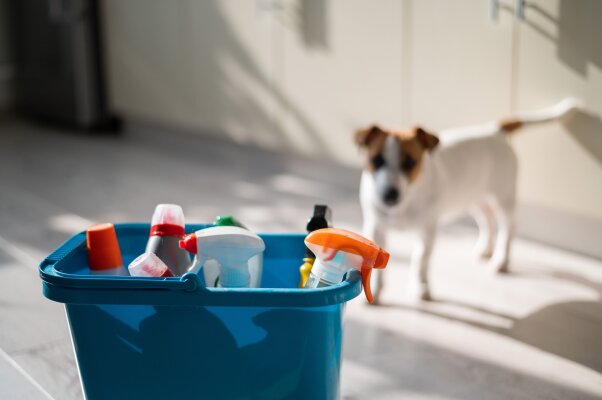Sampling – but correctly!
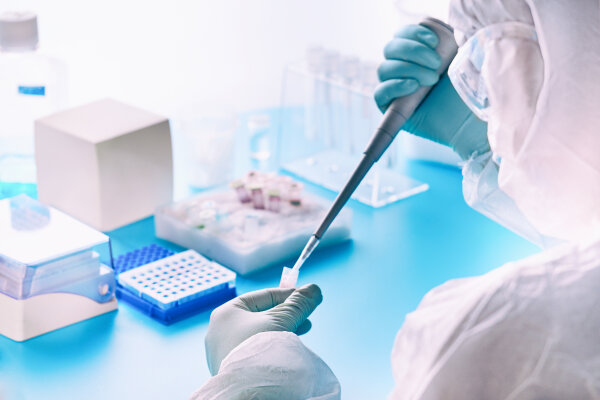
To determine characteristic features of materials, in many cases a small amount of them is taken –this process is known as sampling. In order for sampling to be optimally successful, some aspects must be taken into account. What preparations are important, what the ideal procedure looks like and how best to deal with samples has been summarized compactly in this blog post.
Preparation for sampling
For sampling to make sense, it must be representative of the average properties of the material. This property can be achieved only if certain maxims are observed during the extraction, which is why good preparation is the first priority. This can consist of various sub-steps, but should comply with the following principles.
Research
First and foremost, it is necessary to conduct a basic research on the existing legal situation:
- Closed Substance Cycle Waste Management Act (KrWG): Act to promote the recycling of natural resources in order to protect people and the environment in the management and generation of waste. Today, this law forms the core regulation for waste legislation that was previously set by the Closed Substance Cycle and Waste Management Act (KrW-/AbfG).
- Federal Soil Protection Act (BBodSchG): Act to safeguard and restore the functions of the soil. According to this specification, “harmful soil changes” are to be averted or prevented.
- Sewage Sludge Ordinance (AbfKlärV): Regulation on the utilization of sewage sludge by setting limits of use and threshold values.
- Chemicals Act (ChemG): German law for the protection against hazardous substances.
- Chemicals Prohibition Ordinance (ChemVerbotsV): Ordinance on the restriction and prohibition of the marketing and disposal of certain hazardous substances.
- Ordinance on Hazardous Substances (GefStoffV): Restrictions and prohibitions on the handling of hazardous substances, with the focus on occupational safety.
Representative sampling
In order to achieve a successful sample result, the sample must reflect all those propertiesof the test material that are to be investigated. Only then can it represent the actual base set. As solution approaches, not only mathematical-statistical principles are applied, but also those based on empirical knowledge of the basic set and its sub-batches.
Strategy
The chosen strategy determines the sampling procedure and should be adapted to the characteristics of the test material. In addition, it is based on the research previously conducted and the questions from the relevant legal requirements. In principle,two strategies can be distinguished from each other, which can also be combined in practice:
“Hot-spot sampling”: contamination focal points (so-called “hot-spots”) are identified that negatively affect the properties of the overall material. Usually, conspicuous batches that reflect the “worst case” are used for this purpose.
Characterization of basic quantities:This is contrasted with the characterization of basic quantities, which represent the average substance content or substance profile. Here, quantity and composition are tested in their entirety, with “hot-spot” sampling being more of a special case.
Sampling plan
The sampling plan serves as a guide for the sampling procedure. It is based on the research and strategies established during preparation. Also, the sampling plan defines the questions to be answered during sampling. These may look like the following:
- What are the reason for and the aim of sampling?
- Where does the sample come from?
- What spectrum of pollutants or substances can be expected?
- Are there temporal and/or local variations in the distribution of the substance inventory?
- Which parameters are to be determined by sampling?
- Do special occupational safety measures have to be observed in the process?
Correct sampling procedure
Already from the extensive preparation it can be deduced that sampling does not only mean the mere collection of material. Instead, several aspects must be considered that make sampling successful in the first place. The most important criteria for the correct procedure are the following:
- person and protective clothing: Especially if biological contamination is suspected, sampling should be carried out under the guidance of qualified personnel including the selection of suitable protective clothing.
- Exclusion of hazardous substances:An exclusion of explosive, radioactive and/or hazardous volatile chemical substances must also be performed at the sampling site.
- Determination of the state of aggregation:The state of aggregation of the sample is also determined directly at the sampling location.
- Representativeness: As already mentioned in the preparation, a representativeness of the sample must be ensured. This applies to both the material and the selected area.
- Container:The container for sample transport must be clean, resistant and approved. In the case of biological samples, it must also be sterile. In order to ensure safe specimen transport, the responsible laboratory should be informed at this point.
- Sample division:Since it can happen that a single sample is unsuitable, a differentiation is usually made into main sample and reserve sample. Therefore, one sample split must be made per specified sampling location.
- Baseline sample:The so-called baseline sample is taken outside the contaminated zone in order to be able to determine the actual baseline contamination of the area individually.
- Sampling along the line of dispersion:In addition, sampling should be carried out along the line of dispersion in order to be able to analyze the spread of contamination as accurately as possible.
- Sampling of the lead substance: In order to determine the source of release of the contamination, additional sampling is performed for substance identification of the lead substance.
- Sample collection point:The contamination should not be carried over, of course. Therefore, a central sample collection point is needed to plan and execute the decontamination of containers.
- Documentation:In addition, there is the documentation of the sampling, which should be both comprehensible and unambiguous.
The correct handling of specimens
Not all samples are the same – there are many different samples and substances for which different equipmentis ideal. The same applies to the equipment and procedures for picking up the substance. According to the Robert Koch Institute (RKI), for example, the ideal handling of recognizable sample material can be defined as follows:
Soil sample: While small objects are gripped with tweezers or crucible tongs, powder and loose samples should be picked up with a spoon spade. For pastes, on the other hand, ordinary stainless steel spatulas are useful.
Fouling sample: Fouling samples are taken with a side cutter and placed in a sampling bag or PE sampling container. The latter is the case when there is a risk of perforation by sharp plant parts. The bag should be turned inside out when the specimen is collected so that it can be easily slipped over the specimen afterwards.
Liquid specimen: For liquid specimens, several acquisition routes are possible. Small quantities are best taken up with an absorbent compress, all other quantities are suitable for pasteur pipettes, syringes and ladles, for example. The sample is then stored in a measuring cup or in a PE sampling bottle.
Wipe test:Swabs are used for wipe tests. Depending on the material properties, these are provided with NaCl, a bacterial medium or a viral medium. Alternatively, sponges and compresses moistened with NaCl are suitable.
Document sampling correctly
Extensive documentationis essential so that samples cannot be confused or significance lost due to missing circumstance information. While the exact aspects will depend in large part on the type of sample and the reason for sampling, the following documentation data should never be omitted:
- Date: The date indicates when the sample was taken. This is important because the nature and extent of contamination can change over time.
- Time:The same applies to the exact time. Often several samples are taken on one day – then the time also serves to document the course over time.
- Name of the sampler:The name of the sampler makes it easier to trace the responsible institution and the contact to the control center.
- Sampling Team: The sampling team should also be documented for the same reason. In addition, different tasks belong to different teams, for example.
- Sample number: The sample number not only enables precise identification of the individual samples, but also contributes significantly to sample management.
- Location of the sample: The exact location should be specified in order to be able to accurately assign the results of the sample analysis.
- Weather: The weather also has an influence on the sample. For example, volatile substances in the air may concentrate differently depending on whether it is raining or whether there is high/low humidity.
- Type of sample: If the type of sample is noted directly after sampling, the analysis in the laboratory can be accelerated. This way, the responsible persons know how best to proceed with the material or aggregate state – even before the sample is opened.
- Observations:For example, if discoloration, unusual features, or dead animals are seen at the sampling site, these observations should be documented in any case.
- Sketch: In some cases, it may also be useful to make a sketch of the sampling location. This can help identify areas, for example, or highlight significant changes to the site.
Sampler types
Since samples are needed in diverse areas of research, the types of samplers can also differ greatly. However, for sampling to work properly, the individual advantages and disadvantages of the samplers should be considered.
Sampler for liquids
Depending on the quantity and volume, different samplers can be used for liquids. These range from pasteurizer pipettes to syringes and ladles. The liquid is then stored in a measuring cup or a special PE sample bottle. For smaller quantities, compresses are also an option. In the meantime, for example, angle cups with telescopic rods have become established to hold liquids with more distance.
| Advantages | Disadvantages |
| No direct contact necessary | Sterility is not always given by air contact |
| Most vessels can be sealed airtight. | Particularly tight closure necessary for transport |
| Impairment of the base material is rare. | Quite high risk of contamination if the sampler is not completely dry |
Sampler for solids
Many different types of samplers are also conceivable for solids. Free solids (think of powders or pastes, for example) can be picked up with a spade, and smaller items with tweezers or crucible tongs. In addition, there are special tools such as zone collectors and drills. These have an elongated shape and a tip that can be twisted into the material. The sample is then cut out there.
| Advantages | Disadvantages |
| Many different options | Drills can destroy the integrity of the specimen. |
| Individual adaptation to the sample material possible | Hard and/or pointed objects require special transport containers. |
Sampler for viscous media
For viscous media, elongated samplers are used which can either be reused or are intended for single use. At the upper partthey have a handle that is pulled up - a vacuum is created inside the rod through which the viscous medium is sucked in. The container is usually similar to that for liquid substances to prevent leakage.
| Advantages | Disadvantages |
| Both single use and reusable samplers available | Possibly large garbage effort |
| Specimen does not have to be touched directly | Depending on the length of the sampler, you have to get quite close to the sample. |
Disposable sampler
In some industries and sectors, disposable samplers that can guarantee both particle-free and sterility are becoming increasingly common. This applies in particular to the pharmaceutical and food sectors, but also to the cosmetics industry. Disposable samplers are individually packaged and are only removed from the packaging directly when used. They can vary greatly in shape and size.
| Advantages | Disadvantages |
| No cleaning required, so no validation of the cleaning method is necessary. | High volume of waste |
| High safety with toxic and hazardous media | Any separate challenges in the respective disposal |
| The risk of contamination is low. | High reproducibility of the sampling procedure |
Criteria for high quality samplers
In order to obtain a meaningful sample and to be able to work cleanly, the use of a high-quality sampler is essential. Therefore, care should be taken to ensure that the following minimum criteriaare absolutely met.
Stainless steel or high quality plastic
When selecting the material, it is elementary that it is an inert material. This means that it does not react with other substances, nor is it possible to dissolve out material - both of which would eventually contaminate the sample. Usually, samplers made of stainless steel or plastic(for example PTFE) are used. These are suitable for most media.
Smooth surfaces
In addition, the surface of the sampler must be smooth, which is easy to achieve with stainless steel and plastic. This criterion serves to prevent material deposits and facilitate cleaning. If there were grooves, for example, material could accumulate there unintentionally. Therefore, exact processing must be ensured here as well so that no material can accumulate in inaccessible undercuts.
Easy cleaning
Speaking of grooves - professional cleaning would also be difficult if the sampler had grooves. Easy and quick cleaning is also one of the basic criteria that the device should have. In some cases, it is even necessary that cleaning can be performed until sterility.
The right sampling for successful examinations
Not all sampling is the same - different procedures and equipment are possible, each of which must be adapted to the type of sample and the material. Those who ensure good preparation and planning are on the safe side - in all areas where sampling is carried out.
FAQ
When taking a sample, in addition to good preparation, attention must be paid to a correct procedure and the correct handling of the sample. The sampler used must be adapted to the material of the medium.
A sample is representative only if its properties correspondto the average properties of the basic quantity of the test material. Therefore, it must reflect the components of the original medium.
Environmental sampling is used to document and evaluate the quality of the environment. For this purpose, various materials can be picked up, ranging from soil and powder to fouling, pastes, liquids and air.
A qualified sample is a composite sample consisting of at least five individual samples, which in turn were taken between two minutes and two hours apart.
Which parameters should be examined in a soil investigation can depend entirely on the individual case. Common aspects include, for example, the nutrient and humus content, the soil organisms present, any contamination or the physical composition.
A physical sample is one in which factors such as material distribution, discoloration, contamination, and shape, texture, and bulk density are determined.
Do you have questions about the topic or would you like to suggest a topic? Please feel free to contact us by phone at +49 30 2096579 00 or send us an email to info@medsolut.com.

